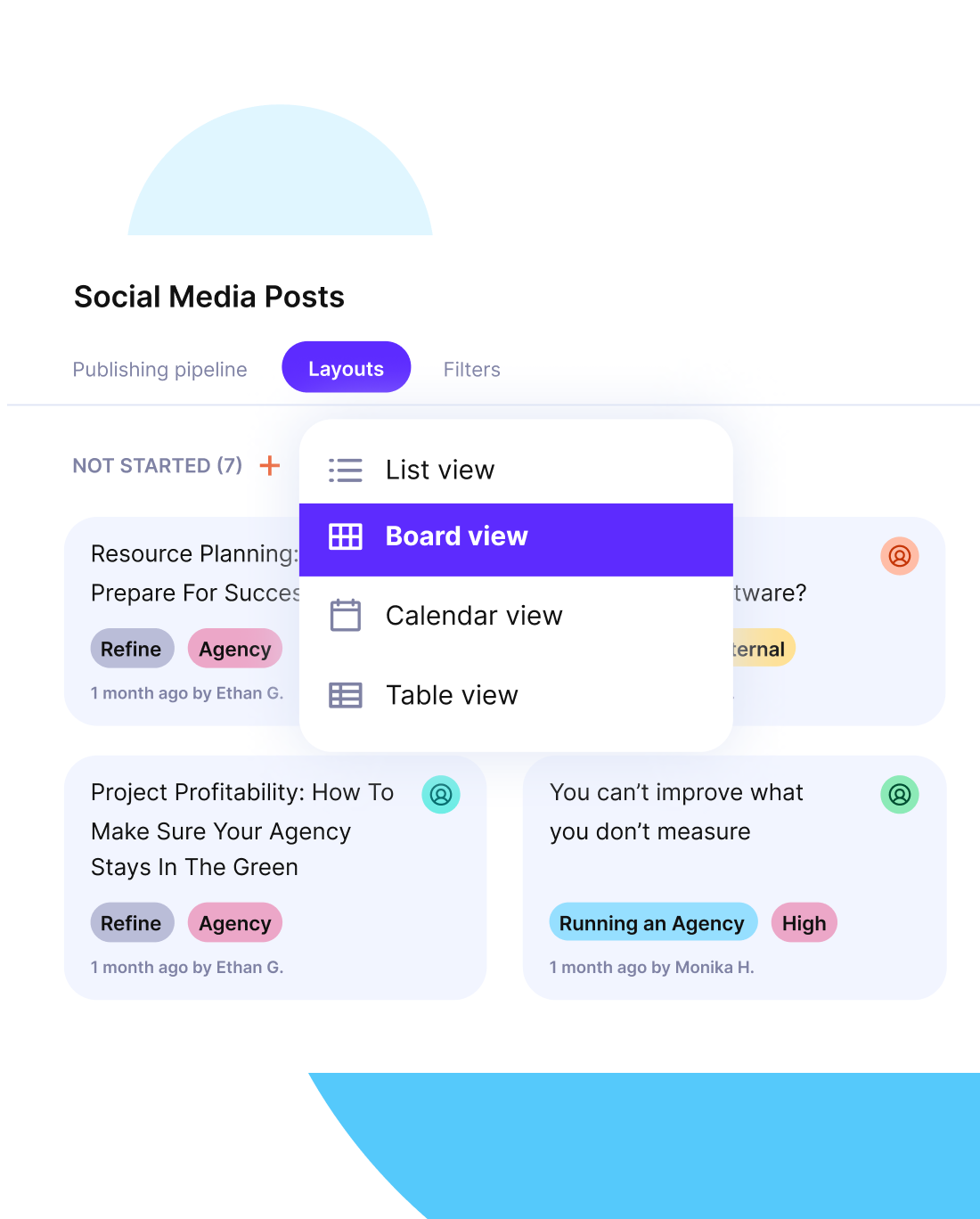What Is Hybrid Project Management and How To Implement It?
Hybrid project management combines Waterfall’s structured planning phases with Agile’s iterative flexibility. More and more companies are using it to increase their project success rates and deliver faster.
However, implementing can get tricky.
Stick with this guide to learn what hybrid project management is, its best practices, what tools to use, how to implement it, and how to overcome common challenges.
Key Takeaways
- Hybrid project management combines Waterfall’s structured planning with Agile’s flexibility to adapt to diverse requirements.
- Companies report higher project success rates and increased stakeholder satisfaction when implementing hybrid methodologies.
- Implementation requires a thorough assessment of the scope, timeline, budget, and team composition to determine the optimal blend of methodologies.
- Your staff needs collaborative frameworks, regular checkpoints, and PM tools that support both Gantt charts and Kanban boards.
What Is Hybrid Project Management?
Hybrid project management (also known as blended project management) is a method that combines structured Waterfall planning with Agile’s flexibility to adapt to change. You should use it on projects that need both clear long-term timelines and enough room for iteration.
The idea behind this approach is to stop forcing projects into one-size-fits-all frameworks, so that you can plan ahead while staying responsive to changes. An example of Hybrid work management would be planning long-term deliverables using Waterfall’s framework, but iterating in sprints where flexibility is needed.
What Are the Types of Project Management Methodologies?
The most common types of project management methodologies are Waterfall, Agile, and Scrum.
Each one has a different approach to planning, tracking, and delivering projects, and many companies now blend them into hybrid models to get the best of both worlds.
In case you need more context, we talk much more about different PM types and techniques in our detailed what is project management guide.
Below is a short breakdown of the key takeaways about each method:
Waterfall Project Management
Waterfall is a traditional, step-by-step PM method. Here, each phase (requirements, design, implementation, testing, and maintenance) happens in order, with little room for changes once you’ve started.
This Waterfall approach works well when the scope is clear and fixed, especially in industries with strict regulations.
Keep in mind that if you need to adapt mid-project, Waterfall can be rigid and hard to course-correct. A lot of project managers combine it with more flexible methods.
For more context, know-how, and tools, check out our Waterfall PM guide.

Easily create Gantt charts with dependencies and timelines.
Agile Project Management
Agile is all about working in short cycles (called iterations or sprints) and adjusting based on feedback. It’s ideal when requirements are likely to evolve or when stakeholder input changes fast.
Agile focuses on collaboration, transparency, and delivering usable results continuously (not just at the end). That makes it a great fit for dynamic projects, especially in software, marketing, and product development.
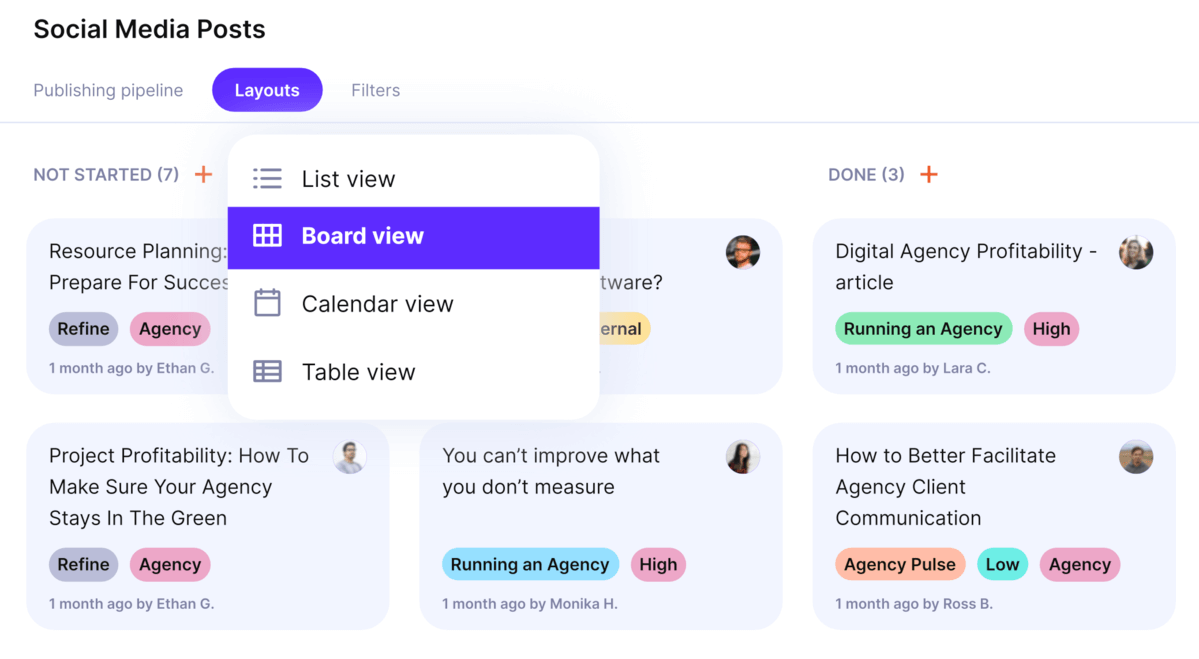
Use Productive’s Kanban boards to manage agile projects.
In case you’d like to know more about this PM approach, there’s a detailed Agile project management guide on our blog.
Scrum Project Management
Scrum is a popular Agile framework with a clearer structure. Here, project teams work in sprints (typically 2–4 weeks) to deliver pieces of the final product. They have daily stand-ups to stay aligned and on track.
The Scrum framework has defined roles like Product Owner and Scrum Master; the idea behind them is to bring order to Agile’s flexibility. That’s why it’s often one of the most widely used project management methodologies – it establishes a weekly pulse to fast-paced environments while still allowing room for structure.
In case you need a pros, cons, best fit recap, there’s a comparison table below:
| Methodology | How It Works | Pros | Cons | Best Use Case | Recommended Tools |
|---|---|---|---|---|---|
| Waterfall | Linear and sequential: each phase is completed before the next begins. | Predictable timelines Strong documentation Easy to manage scope | Inflexible to change Delayed feedback loop | Projects with fixed scope, compliance requirements, or strict regulatory requirements | Productive, Microsoft Project, GanttPRO, |
| Agile | Iterative and adaptive: work is completed in short cycles with regular feedback. | High flexibility Fast iteration Frequent collaboration | Less predictability Requires disciplined teams | Software development, product launches, fast-changing environments | Jira, Trello (for super basic projects), Productive |
| Scrum | Agile framework with 2–4 week sprints, defined roles (e.g., SCRUM master or product owner), and regular ceremonies (daily stand-ups, reviews). | Structured flexibility Defined team roles Continuous improvement | Requires experienced team Can be too rigid for small/simple projects | Complex product development where clear roles and fast delivery are key | Jira, Productive, Notion (Scrum boards) |
| Hybrid | Combines structured planning (Waterfall) with flexible execution (Agile/Scrum). | Tailored to real-world scenarios Balanced control and flexibility – Ideal for agencies | Requires strong coordination Can be confusing without the right setup | Agencies, service-based teams, or mixed workflows managing both retainers and sprint-like projects | Productive (purpose-built for hybrid), Wrike (with integrations) |
What Are the Benefits of Hybrid Approach?
The benefits of Hybrid project management are improved performance, higher stakeholder satisfaction, more efficient resource optimization, and proven project success boosts.
Actually, according to the PMI’s Pulse of the Profession 2024 report:
Hybrid management frameworks are gaining ground as the fit-for-purpose approach as organizations combine predictive and agile practices on projects.
Another notable finding is that the use of hybrid approaches is on the rise (+57%). In other words, hybrid approaches are a huge deal and here to stay.
| Benefit | Why It Matters |
|---|---|
| Flexible planning + execution | Mix structured upfront phases with iterative sprints to adapt quickly. |
| Better stakeholder engagement and satisfaction | Tailors delivery to client needs, boosting alignment and trust. |
| Resource optimization | PMI reports 88% of organizations using hybrid methods saw improved resource management ( sources: Reddit & Linkedin) |
| Proven success boost | Compared to single methodologies, hybrid projects saw up to 27% higher success rates |
Why Project Teams Love the Hybrid Approach?
Hybrid Agile project management brings together the best parts of both traditional and Agile approaches. That means:
- You get flexibility without chaos. Plan what needs structure, iterate where speed and feedback matter.
- Clients stay happier. Tailoring the workflow to their needs improves trust and transparency.
- People work smarter. With the right tools, you can better manage resources, budgets, and expectations across projects.
Manage Hybrid projects with Productive
What Are the Challenges of Blended PM Approaches and How To Solve Them?
The challenges of Hybrid PM approaches are balancing Waterfall and Agile methods, communication breakdowns, difficulties with handling timelines and deadlines, and securing stakeholder buy-ins.
To make the problem-solving smoother, we made a cheat sheet of these challenges that explains why these problems happen and how to solve them.
| Challenge | Root Cause | Impact | How To Solve It |
|---|---|---|---|
| Securing Stakeholder Buy-In | Stakeholders may be unfamiliar with hybrid methodologies and prefer traditional approaches like Waterfall. | Resistance or reluctance to adopt the hybrid approach. | Clearly communicate the benefits, show case studies of successful hybrid projects, and involve stakeholders early in the planning process to build trust. |
| Balancing Waterfall and Agile Methodologies | Difficulty in understanding when to apply Waterfall vs. Agile, and lack of training. | Confusion, inefficiency, misalignment, and delays in execution. | Provide comprehensive training on both methodologies, create guidelines for their application, and ensure project managers guide the team through the process. |
| Communication Breakdown Between Teams | Switching between structured planning and iterative development phases creates fragmented communication. | Missed expectations, confusion, and delays due to poor communication. | Introduce clear communication channels, schedule regular check-ins and updates, and use PM tools with built-in collaboration features to keep everyone aligned. |
| Complexity in Managing Resources | Different resource allocation needs between Waterfall’s rigid organization and Agile’s flexibility. | Resource conflicts, inefficiencies, and overbooking. | Use integrated resource management tools with real-time visibility, plan ahead for resource shortages, and ensure optimal resource utilization across both methodologies. |
| Handling Timelines and Deadlines | Waterfall’s fixed shape vs. Agile’s flexible timelines can cause confusion about deadlines and milestones. | Misaligned expectations, confusion about deadlines and milestones. | Set clear expectations from the start, define milestones for each phase, and regularly update clients on progress while managing timelines with flexibility. |
How To Implement a Hybrid PM Strategy?
Implementing a Hybrid project management strategy starts with evaluating your project’s unique requirements and constraints to determine which methodologies will work best together. Once you’ve identified the right blend, you should focus on cultivating team collaboration during the planning phase.
Then create a clear process roadmap that outlines how different methodologies will interact throughout your project’s lifecycle.
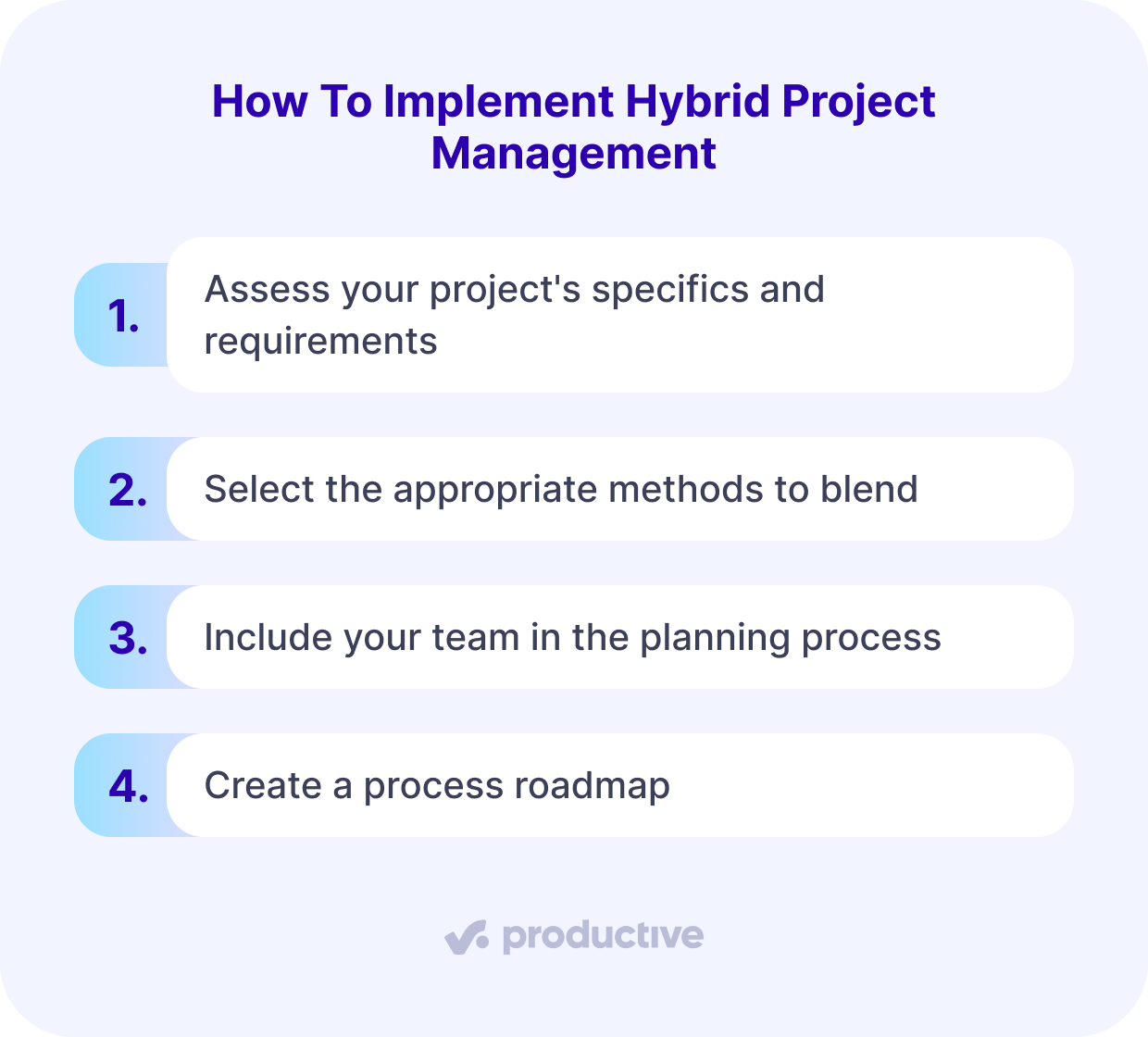
Here’s a step-by-step roundup of the implementation process:
Step 1: Assess your project’s specifics and requirements
Before going hybrid, you need to evaluate your project’s key requirements like scope boundaries, timeline requirements, budget limitations, and team composition. Don’t forget to factor in stakeholder expectations, regulatory obligations, or any other technical complexities (e.g., the PM tools and frameworks your team uses).
Document your analysis because it will help you understand the specific parts of specific methods that you need to blend in. This brings us to step no. 2.
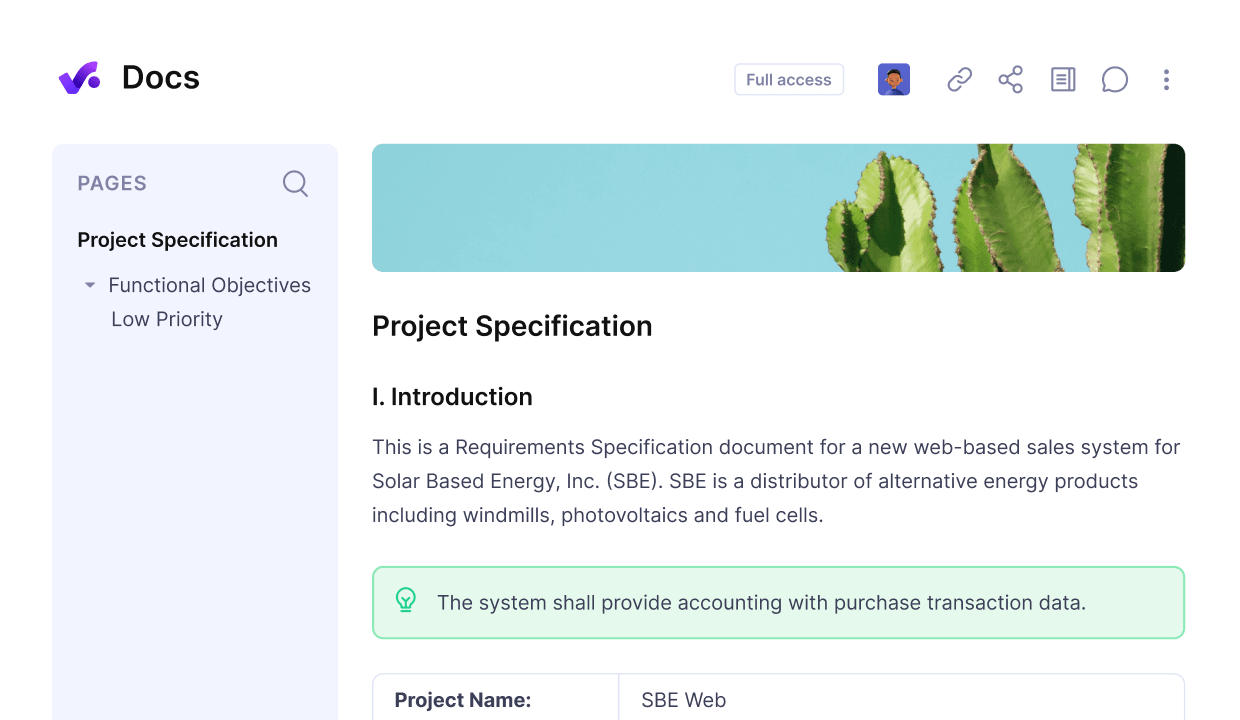
Share and collaborate on project documentation in Productive.
Step 2: Select the appropriate methods to blend
Here you need to take your findings and apply them to the elements of Agile and Waterfall that you want to fit together.
For example, you might use Waterfall’s structured approach for phases that require heavy documentation and regulatory compliance. Meanwhile, Agile can be applied to parts of the project that benefit from flexibility, such as product development or design iterations.
The goal here is not to force these methodologies together, but to strategically apply each method where it adds value.
Step 3: Include your team in the planning process
Teams execute projects and put methods into practice. Your team needs to be involved in the planning process. It’s up to you to make sure they know when to apply Waterfall’s step-by-step process and when to switch to Agile’s iterative cycles.
Use project management software that supports both Gantt charts (for Waterfall phases) and Kanban boards (for Agile tasks) to give everyone clear visibility on tasks. Set regular check-ins and feedback loops.
The hybrid approach needs to evolve based on what’s working and what’s not, so it’s very important that you measure and track the effectiveness of your efforts during all phases.
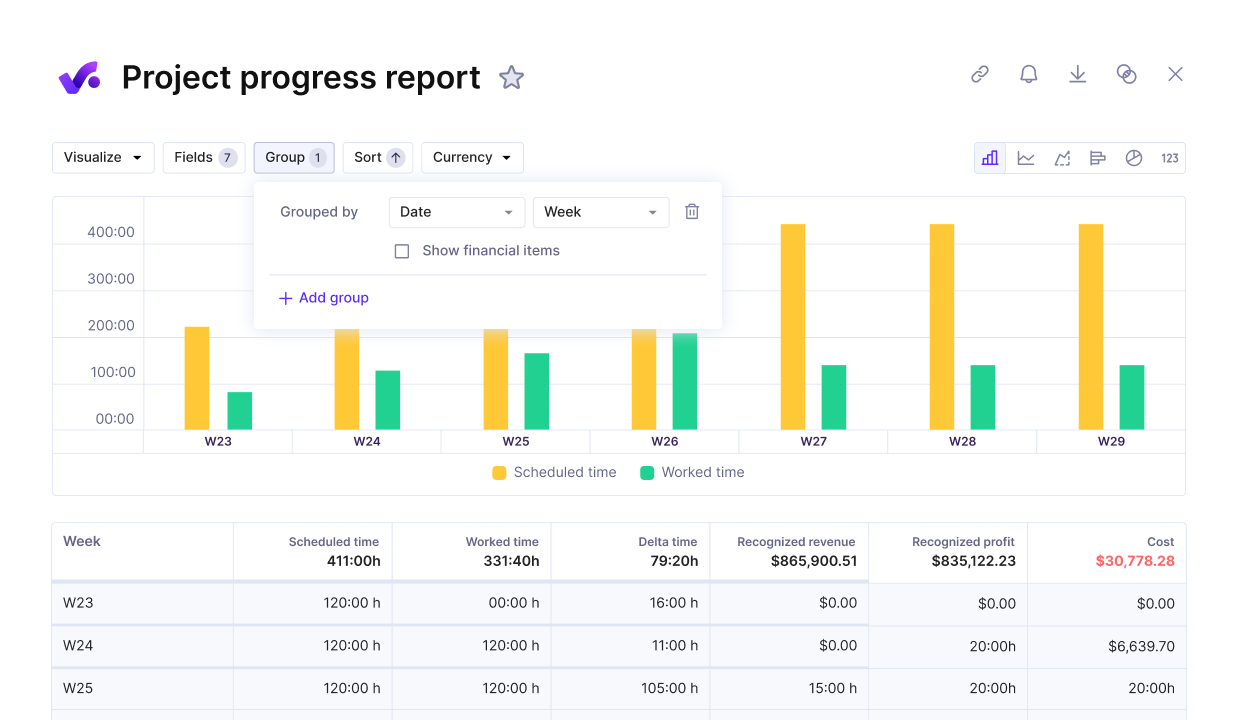
Track the implementation progress and its costs in one view.
Step 4: Create a process roadmap
Here, you need to map out the flow of your project. The process roadmap should include both Agile and Waterfall phases. Plan for regular checkpoints where you assess progress and gather feedback.
Use tools like Agile-compatible Gantt charts to track milestones while also keeping your iterative cycles organized with Agile boards. Share this roadmap with your team and stakeholders to make sure that everyone is on the same page and aligned with the overall direction.
You cannot implement a hybrid methodology without the right tool stack. In case you need more help with that part, jump over to our big list of Agile PM tools for the best picks, pros, cons, and tested user reviews.
How To Blend Different PM Methods?
You blend different project management methodologies by identifying the specific strengths and weaknesses of each method you’re considering, then developing clear implementation strategies that leverage the best aspects of both frameworks.
At this point, you should also establish a system for continuous evaluation and adjustment, since the effectiveness of your hybrid framework will depend on your ability to adapt as conditions change.
Choose the methods that complement each other
Just like in the implementation part before, you should first assess the requirements to identify complementary project management methodologies.
Take into account the following factors:
- Scope clarity (determines which method is a better fit)
- Staff expertise levels (influence the implementation approach)
- Stakeholder expectations (shape how you communicate)
Discuss how to implement them
Here, it’s up to the project manager and the team to choose the right tools and create a detailed implementation plan. This plan should include a implementation timeline, KPIs, and continuous feedback and monitoring procedures.
Some of the things you need to discuss with your team are:
- When is the implementation starting?
- What are the implementation milestones?
- Are there any risks, and how can they be mitigated?
- Do we need additional training?
What additional tools do we need (if we need them), and what’s our budget? - Which phase (or process) requires Agile (e.g., new product feature development) and which requires Waterfall (e.g., research and documentation)?
- How will we measure the KPIs, and how do we gather data (e.g., task completion time)?
- How will we communicate change to stakeholders and other staff members?
Evaluate and adjust
You should continuously evaluate and adjust your blended framework throughout the project lifecycle. Establish regular assessment checkpoints for effectiveness, performance, and gathering stakeholder feedback.
As a project manager, every big decision you make should be data-driven. Do yourself a favor and choose a tool that tracks all that data, documents the lessons learned, and keep refining.
The hybrid approach encourages experimentation and innovation. It’s okay to make mistakes, but it’s not ok to not learn from them.
Real-Life Example of Managing Hybrid Projects
An amazing real-life example of Hybrid project management that you can learn from is XPlace’s cloud-based software development project.
Challenge:
XPlace, a startup focused on cloud-based software solutions, had cross-continental development teams working from different regions (North America and Europe).
The company was facing difficulties managing its software development projects using only Agile or Waterfall methodologies due to the unique challenges posed by working in a startup environment with a global workforce.
How They Implemented Hybrid Methods:
XPlace combined the Waterfall approach for upfront project plans and scope definition with Agile for iterative development.
- They used Waterfall to establish clear timelines, detailed requirements, and a defined scope, ensuring structured planning at the start.
- Once the total scope was set, Agile’s flexibility was employed through one-month sprints to develop specific features, allowing for regular reviews, quick adjustments, and ongoing client feedback.
- This blended Agile-Waterfall approach provided a balance between structured milestones and adaptability throughout the development process.
Results:
XPlace was able to deliver the software 25% faster compared to their previous 8-month timelines. The structured planning from Waterfall helped the developers set realistic expectations and stick to deadlines, while Agile allowed them to be adaptive and responsive to client needs.
One of the most notable outcomes was the reduction in the bug rate by 18%. This was achieved by using Agile’s iterative development and regular feedback cycles, which allowed for better quality control and early detection of issues.
“We released the product on time…and improved quality by reducing bugs by 18%.”
Source: Allon Mason, CEO of XPlace (quote from Binfire case study).
What Are the Best Practices for Successful Hybrid Work Management?
The best practices for successful hybrid project management are establishing healthy and direct communication, selecting and learning how to use the right tools, training your colleagues before the implementation, and ongoing performance monitoring.
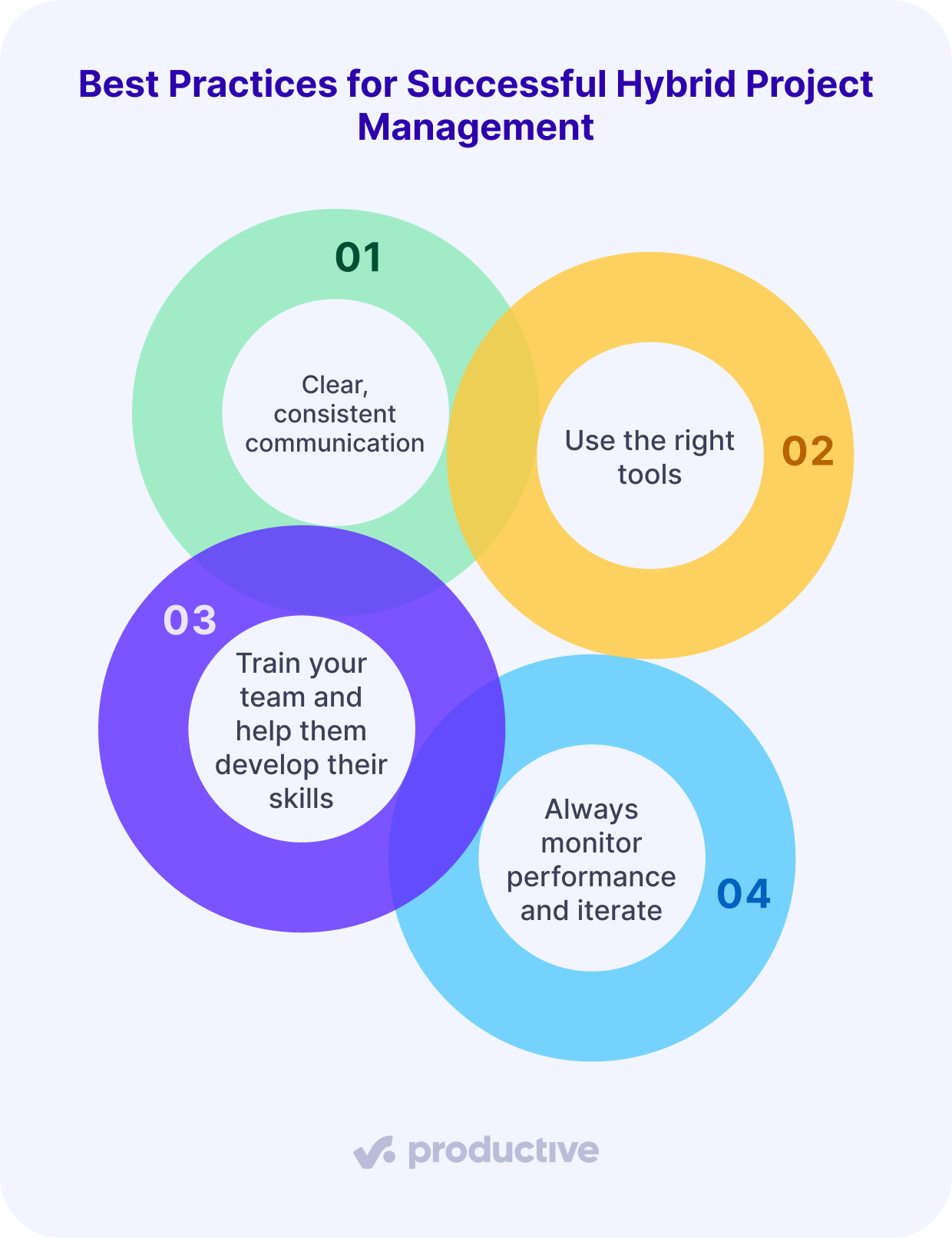
Below, we’ll zoom in on each best practice:
Maintain clear, consistent communication
Clear, consistent communication is crucial to make things work. Project managers should run regular weekly reports, use visual tracking tools like burn down charts, and establish customized communication protocols (what to communicate, where to communicate, and when).
Healthy and consistent communication keeps everyone aligned and informed.
Involve project team members in developing communication strategies tailored to the project’s needs. This will help maintain accountability and encourage collaboration.
Use the right tools and technologies
Modern project management software, such as Productive and TeamGantt, integrates both Waterfall and Agile methodologies. It provides seamless tracking, visibility, and accountability.
These tools allow hybrid teams to manage tasks, timelines, and progress effectively across both structures.
Productive event takes it further by replacing fragmented tools and manual data entry. With a tool like that, your staff can track every bit of data tied to separate tasks, budgets, timelines, etc.
It also ties this data to billing, invoicing, and real-time reports.
Train your staff and help them develop their skills
Organize workshops, hands-on sessions, and continuous learning resources so that your team members understand how to blend Agile and Waterfall methodologies effectively.
It’s also an effective way to foster ownership and commitment.
Make sure to address any skill gaps (e.g., how to use a key feature in your PM tool, how to communicate, what to test before moving on to the next stage of your project, etc.) before you start implementing.
Always monitor performance and iterate
Detailed and real-time monitoring systems are necessary to track the performance of both Waterfall and Agile elements. Use tools like burn-down charts and Gantt charts to track progress, or resource allocation tools to optimize resource spend.
Weekly reports provide transparency and allow for timely feedback. They will help refine the hybrid approach continuously, as well as boost stakeholder engagement.
Final Takeaway
By now, you have a solid understanding of how the hybrid approach combines Agile methodologies and traditional project management to deliver complex project goals.
Project managers especially need to understand how different frameworks work, when to use them, and what tools are must-haves.
Stick with the best practices and implementation tips from this article to adapt your approach and meet specific needs and project goals. Start small, learn from experience, and gradually refine your hybrid strategy for ideal results.
Going hybrid starts with choosing the right tools, the best first step you can take is booking a short 30-min demo with Productive.
Implement Hybrid Project Management with Productive
From project management to financial forecasts, visibility into tasks, workloads, and budgets. Try out Productive’s all-in-one hybrid project management solution.
